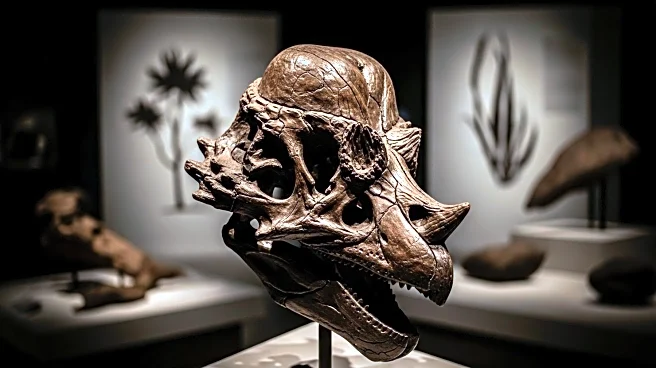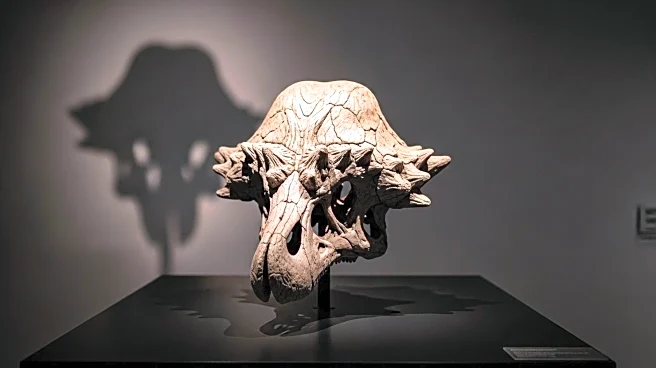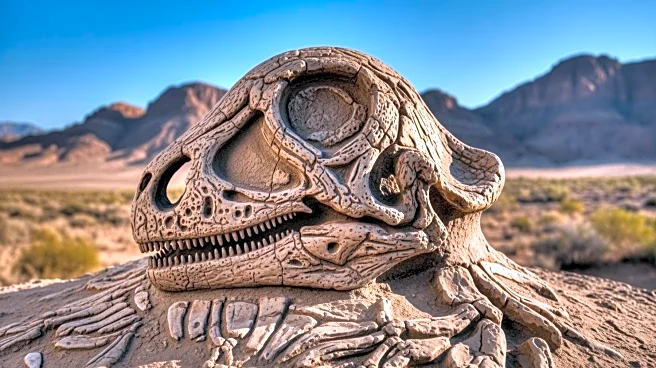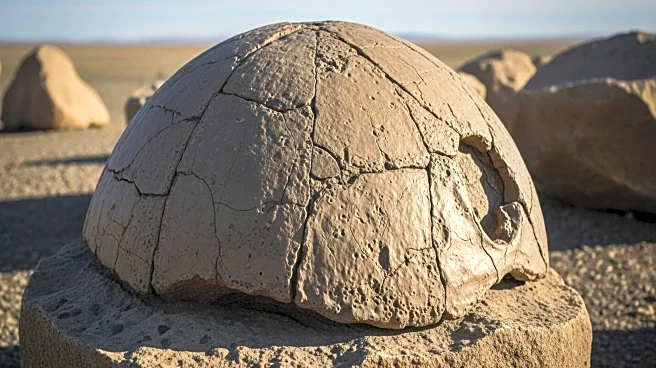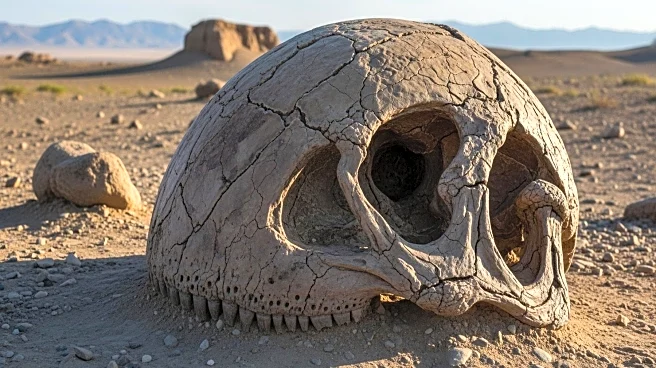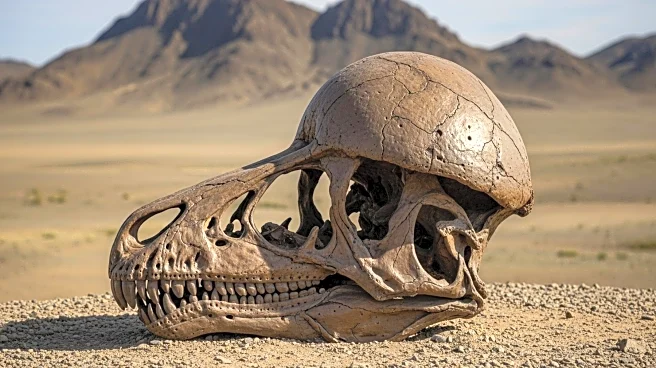What's Happening?
A newly discovered dinosaur species, Zavacephale rinpoche, has been unearthed in Mongolia's Gobi Desert, providing significant insights into the evolution of pachycephalosaurs. This discovery, detailed in the journal Nature, represents the oldest and most complete skeleton of this dinosaur group found to date. The fossil was discovered by Tsogtbaatar Chinzorig from the Mongolian Academy of Sciences and is notable for its well-preserved state, including a fully formed dome on its skull. The species lived approximately 108 million years ago during the Early Cretaceous period. The research, led by Lindsay Zanno of North Carolina State University, highlights the importance of this find in understanding the development of cranial domes in pachycephalosaurs, a topic that has long been debated due to the fragmentary nature of previous fossils.
Why It's Important?
The discovery of Zavacephale rinpoche is pivotal for paleontologists as it fills a significant gap in the pachycephalosaur timeline, pushing back the fossil record of this group by at least 15 million years. This find provides a more comprehensive understanding of the anatomy and biology of pachycephalosaurs, including their growth stages and socio-sexual behaviors. The well-preserved state of the fossil, including limbs and a complete skull, allows researchers to couple growth stage with dome development for the first time. This could lead to a reevaluation of how these dinosaurs used their distinctive domes, which are believed to have been used for socio-sexual displays rather than defense or temperature regulation.
What's Next?
The discovery of Zavacephale rinpoche opens new avenues for research into the evolutionary history of pachycephalosaurs. Future studies may focus on comparing this specimen with other pachycephalosaur fossils to better understand the diversity and evolutionary adaptations within this group. Additionally, the presence of stomach stones and other anatomical features in the fossil may lead to further investigations into the dietary habits and ecological roles of these dinosaurs. The research team, supported by the National Geographic Society, plans to continue exploring the Gobi Desert for more fossils that could provide further insights into the prehistoric ecosystems of the region.
Beyond the Headlines
The discovery of Zavacephale rinpoche not only enhances our understanding of dinosaur evolution but also underscores the importance of international collaboration in paleontological research. The involvement of scientists from multiple countries, including Mongolia, Japan, and South Africa, highlights the global effort required to uncover and study these ancient specimens. This find also emphasizes the significance of preserving fossil sites like the Gobi Desert, which continue to yield important scientific discoveries that reshape our understanding of Earth's history.

